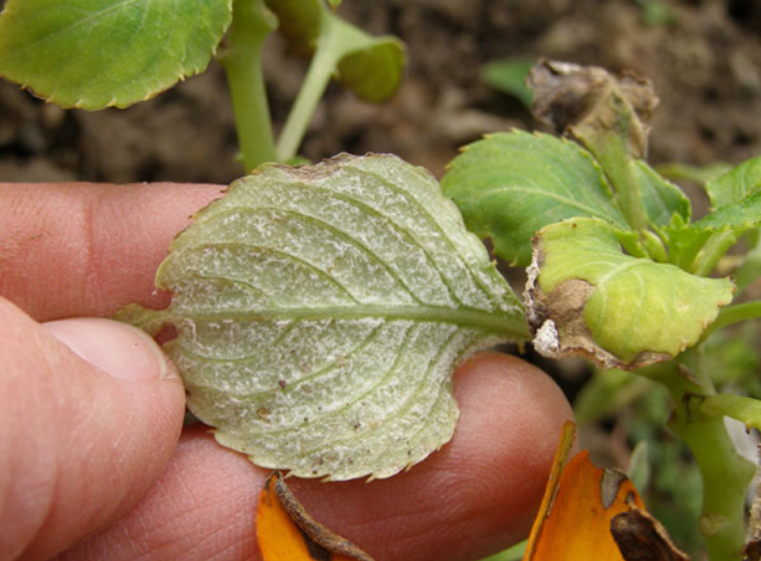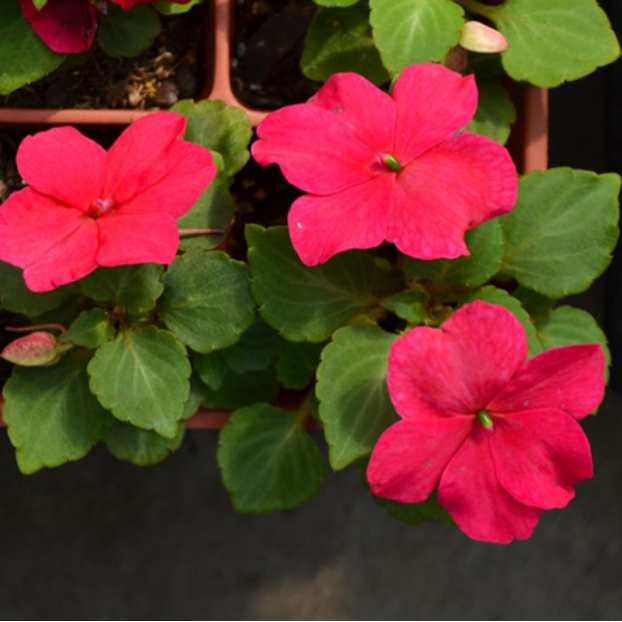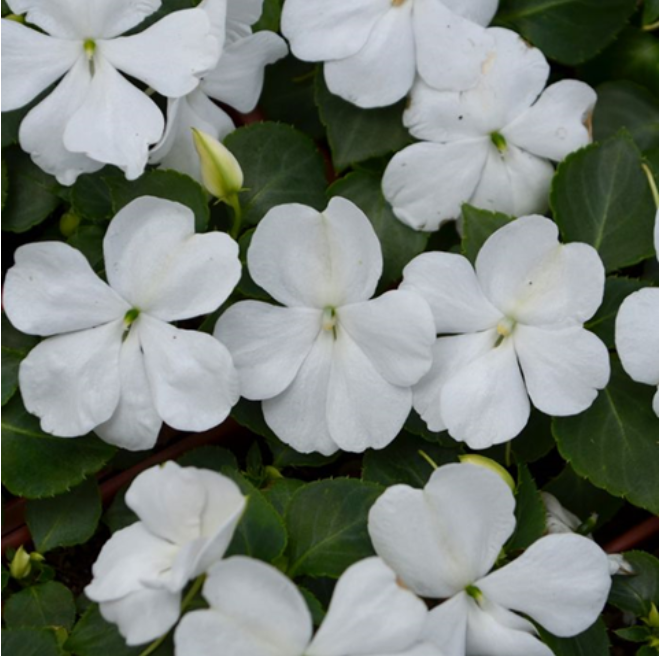Impatiens downy mildew was first observed in Minnesota nurseries in 2011. It devastated shade gardens everywhere. Impatiens walleriana has been the go-to shade garden plant for decades and when the disease hit, it changed everything.

Downy mildew on impatiens photo by University of Minnesota Extension
First let’s talk about what it is:
- Plasmopara obducens is the fungus-like microorganism that specifically attacks impatiens walleriana.
- It is spread through the air and can live in the soil for 5 or more years.
- Early symptoms are slightly yellowed leaves.
- Later, leaves and flowers start to drop and the leaf undersides turn white with a coating of spores.
- It is a “water mold” that thrives in wet conditions and cool days. It will spread easily from plant to plant.
This fungus does not affect the following types of impatiens:
- New Guinea
- Sun Harmony
- Double
- Sun
- Hanging baskets also have a much better chance of not becoming infected
In addition, plants such as wax begonias, torenia, browallia or shade coleus make great substitutes.
Since the first infections were observed, plant breeders have been working to build resistance into these wonderful shade annuals. And there is good news, two new series of impatiens, Imara and Beacon, have proven superior genes highly resistant to downy mildew! Gertens now sells a number of them.

Imara ‘Rose’

Beacon ‘White’
Should you plant impatiens walleriana, Gertens recommends spraying Bonide Fruit Tree and Plant Guard on them. Other suggestions include avoiding large plantings of impatiens and getting the leaves wet.
Remove infected plants, because the spores on the leaves can be carried not only by splashing water but wind can infect nearby plants. When you take out your plants in fall, be sure to get the roots and any fallen leaves and flowers as well. Do not compost infected plants.
The experts at Gertens are always available to answer your questions!
